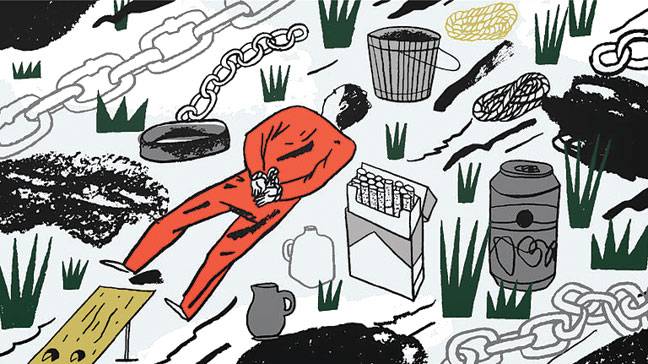JAMES KITFIELD
After President-elect Donald J Trump insisted during the campaign that “torture works” and promised to bring back waterboarding and “a hell of a lot worse,” it was just a matter of time before the former CIA official Jose Rodriguez and the former Air Force psychologist and CIA contractor James Mitchell resurfaced to defend the indefensible.
Starting in the 1980s, Mitchell helped run a training program designed to give service members a taste of the harsh treatment they could expect as prisoners of war, including a form of simulated drowning used by the Chinese on American airmen during the Korean War. After Sept. 11, he and a colleague, Bruce Jessen, developed a theory that “waterboarding” and other brutal interrogation techniques could produce a sense of “learned helplessness” that would render detainees incapable of withholding information. Neither Mitchell nor Jessen had conducted real-world interrogations and they relied on techniques designed by totalitarian states. Those methods tended to elicit false confessions, as opposed to reliable intelligence - but that did not dissuade CIA officials from paying more than $80 million to their company, Mitchell Jessen and Associates.
United States military and counterterrorism officials have never forgotten where that detour into darkness led - unreliable intelligence, demoralized interrogators, terrorists who still cannot be tried in a court of law because they were tortured and a stench that still clings to America’s counterterrorism reputation these many years later.
As the former head of the CIA’s Clandestine Service, Rodriguez was investigated, though not prosecuted, by the Justice Department for destroying videotapes of interrogations of Al Qaeda detainees because he worried that the “ugly visuals” might endanger American lives. Yet he continues to advocate for their use. Mitchell also continues to publicly argue that waterboarding works, and that enhanced interrogation techniques were used only when the “tea and sympathy” approach failed.
Let the record show that these claims are misleading in the extreme.
The most prominent test case where a single terrorist suspect was interrogated using both the FBI’s traditional approach and the CIA’s enhanced techniques was Abu Zubaydah, the first high-value Qaeda operative captured after Sept. 11. Held at a CIA secret “black site” prison, Zubaydah, who was badly wounded during his capture in Pakistan, was initially interrogated by a two-man FBI team consisting of Special Agents Steve Gaudin and Ali Soufan. By building a rapport with the suspect and painstakingly breaking down his cover story, the agents learned for the first time from Zubaydah that the mastermind of the 9/11 attacks was Khalid Shaikh Mohammed. They also extracted the potentially critical intelligence that an American Qaeda operative, Jose Padilla, was plotting to explode a radiological “dirty bomb” inside the United States.
Later the CIA took over the interrogation, and for the first time a prisoner was subjected to the regime of “learned helplessness.” The methods included sleep deprivation, hard slaps, stress positions, prolonged confinement in coffin-like containers and more than 80 rounds of mock drowning. The torment so profoundly disturbed CIA personnel that some were “to the point of tears and choking up,” as a team member wrote in an email published in a 2014 report by the Senate Select Committee on Intelligence. At the end of it, Zubaydah was indeed a broken man, but he had surrendered no more actionable intelligence.
In an Orwellian twist, Mitchell and Jessen concluded that their experiment had succeeded because it proved that Zubaydah could not possibly have any additional intelligence to surrender. In a later brief to the president, senior CIA officials summarized some of the “key intelligence” gleaned from Zubaydah as information identifying Khalid Shaikh Mohammed as the mastermind of 9/11, and the terrorist suspect Jose Padilla, both of whom were later captured. No mention was made that the critical intelligence was gleaned by FBI agents without using torture.
By that point the FBI had wisely distanced itself from the CIA’s interrogation program. The bureau sent profilers from its Behavioral Analysis Unit to interview failed suicide bombers in Afghanistan to better understand their motivations and psychology. Armed with those insights, and using its traditional approach, the bureau gleaned important intelligence from the would-be New York subway bomber Najibullah Zazi; the would-be Times Square bomber Faisal Shahzad; and the “underwear bomber” Umar Farouk Abdulmutallab, who wanted to bring down a Northwest Airlines flight over Detroit.
In calling for a return to waterboarding, Trump was playing to the crowd. A Reuters/Ipsos poll conducted last year found that nearly two-thirds of Americans believe that torture of terrorism suspects can be justified. But a number of Trump’s cabinet nominees have recently made clear they disagree, including his pick for secretary of defense, Gen. James Mattis; for CIA director, Representative Mike Pompeo; for attorney general, Senator Jeff Sessions; and for secretary of state, Rex Tillerson.
An early test of Trump’s soundness as commander in chief will come when he has to choose between relying on the judgment of his cabinet, or following the likes of Jose Rodriguez and James Mitchell.
James Kitfield, a senior fellow at the Center for the Study of the Presidency and Congress, is the author of “Twilight Warriors: The Soldiers, Spies and Special Agents Who Are Revolutionizing the American Way of War.”–NY Times






